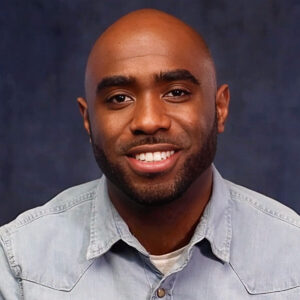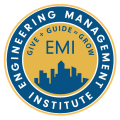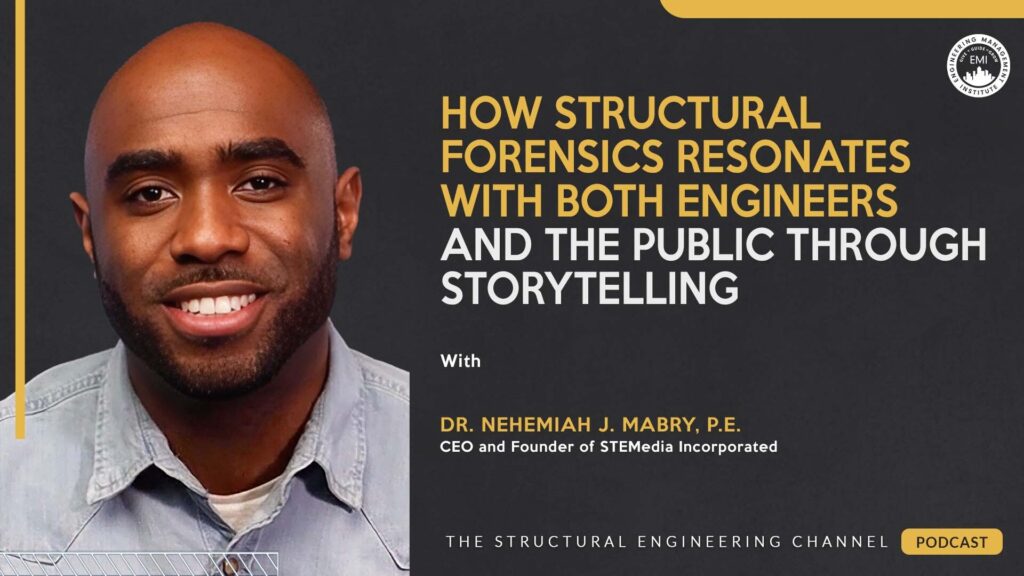In this episode, I talk with Nehemiah Mabry, Ph.D., P.E., CEO and Founder of STEMedia Incorporated, about how storytelling and technical insight transform structural forensics and engineering failure analysis into powerful lessons that educate the public, build confidence, and spark curiosity among future engineers.
***The video version of this episode can be viewed here.***
Engineering Quotes:
Here Are Some of the Questions We Asked Nehemiah:
- How did you get involved with STEMedia, and how did that experience connect with your work in structural forensics and forensic engineering?
- What was it like transitioning from aerospace engineering to bridge design and other civil structures, and can you share a specific example of how the work differs?
- How has your experience in structural forensics been so far, and what are some interesting challenges you’ve faced in that field?
- Why do you think structural failures and engineering failure analysis capture the interest of both engineers and the public?
- How do you usually respond to questions about building safety after a collapse or disaster without putting the engineering profession in a negative light?
- Do forensic investigations typically take a long time, like the Florida condominium case, and what factors affect the timeline?
- What can everyday engineers do to help promote engineering communication and engineering outreach online instead of leaving that responsibility to media or other industries?
- What final piece of advice would you give to engineers who want to make a bigger impact and share their knowledge beyond just doing design work?
Here Are Some of the Key Points Discussed About How Structural Forensics Resonates with Both Engineers and the Public Through Storytelling:
- STEMedia begins as a creative outlet alongside technical work in bridge design and grows into a platform that highlights the value of STEM careers. The combination of hands-on engineering and content creation strengthens the ability to connect technical knowledge with real-world inspiration.
- Aerospace engineering focuses on structures that must fly and respond to complex forces, while civil structures center on stability and long-term durability. In aerospace, extensive testing is common, but in bridge design, every structure is built full-scale with no trial run.
- Structural forensics involves investigating failures and uncovering the technical story behind what went wrong. Each project presents unique challenges, such as identifying damage from age, weather, or unexpected events through careful analysis and observation.
- Engineering failure analysis sparks interest because it reveals what happens when systems break down, creating powerful moments of learning. These investigations serve as both cautionary tales and educational insights that appeal to curiosity and safety awareness.
- Focusing on the science behind the failure helps shift the conversation from blame to understanding. By explaining the physical forces and technical reasons involved, the discussion becomes informative rather than accusatory.
- Many investigations take significant time due to limited access to records or incomplete data. Determining causes such as material degradation or environmental impact requires careful review and technical expertise.
- Engineers can share everyday experiences and project highlights in simple, relatable ways that make their work more visible. Even small moments posted online can shift public perception and inspire future generations.
- Making a meaningful impact involves creating something that lasts beyond the work itself, whether in infrastructure or in others. Sharing knowledge and encouraging growth in others extends the influence of engineering far beyond the drafting table.
More Details in This Episode…
About Nehemiah Mabry, Ph.D., P.E.

About the Hosts
Mathew Picardal, P.E., SE

Sources/References:
STEMedia Incorporated
NASA
Connect with Nehemiah Mabry, Ph.D., P.E., on LinkedIn
Please leave your comments or questions in the section below.








